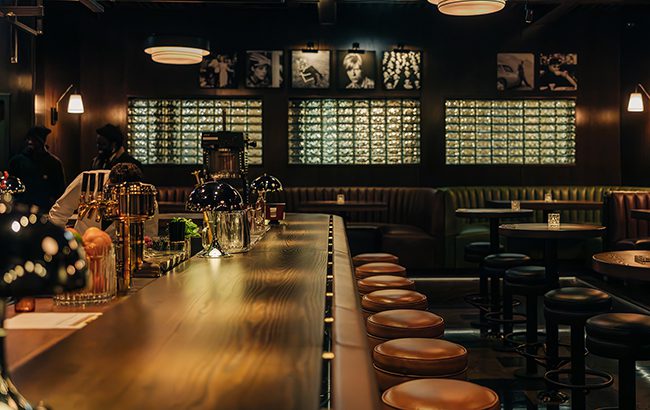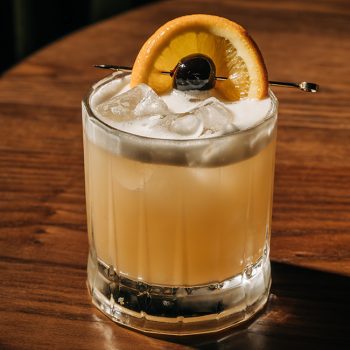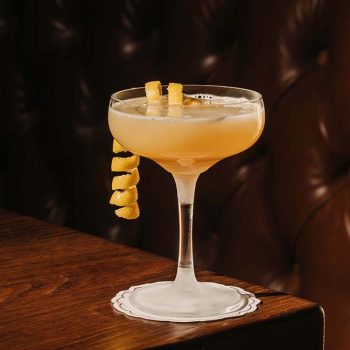Kevin Beary on ‘the demise of the back bar’
By Lauren BowesGus’ Sip & Dip opened in River North, Chicago, on New Year’s Eve, with beverage director Kevin Beary focusing on a concise list of spirits to create a price-accessible offering.

“We’re opening what we’re describing as a neighbourhood cocktail bar,” he says. “We’re trying to make the place feel like it has a familiar aesthetic and vibe – the kind of place you would walk into and feel it could have been operating there for 50 years.
“That’s not to say that it’s intentionally vintage, but more following the guidebook of some really classic taverns and cocktail bars – not just from the US, but from around the world.”

The cocktail menu numbers an impressive 30, along with a small draft beer programme with two custom-brewed options, a cider and two house wines available by the glass.
The food offering focuses on “tavern favourites” created by Bob Broskey from RPM Restaurants.
One of the bar’s USPs is offering cocktails at US$12 plus tax – which is partially achieved by a super-tight list of spirits.
“We’re working on a concept that I’ve been thinking about for a long time, which is the demise of the back bar,” Beary explains. “That’s about operating a bar figuratively and literally without a back bar. There’s certainly not a wall of spirits that the guest is presented with.
“That concept follows the design of the bar, which is in the centre of the room, and a U-shaped bar. There’s a clear eyeline from one guest seated at the bar directly across the other, with no display of bottles in the way.”
The concept requires the team to select just one spirit to represent each category. “There are a couple of exceptions to that – there are certain categories where a single spirit selection would be inappropriate,” he adds. One understandable instance is whisky: Gus’ Sip & Dip will have one single malt Scotch, one blend, one Bourbon, one rye and one Irish whiskey.
Picking just one spirit for each category would surely strike fear into the heart of any bartender, but for Beary, the “goal was to get as best quality in each category as we could”.

“Being able to purchase certain products in higher quantities is more advantageous for us from a cost perspective,” he explains. “Therefore, by picking one singular product, I’m able to use something at a significantly higher quality than you normally would to make the margin you need on a cocktail.
“Our goal was to get products that have a very strong reputation, that truly are hallmarks of quality – and also they had to work well in the cocktails we were planning. That’s not necessarily exclusive – there are a lot of situations where the best product in the category does make the best specific cocktail, but that’s not necessarily an absolute.”
One exception to the single-product rule is gin. “There was a specific gin that made what we consider to be the best Martini, but it didn’t make the best Clover Club,” he explains. That led the bar to allow one exception to its rule, with Tanqueray No. 10 used for Martinis and regular Tanqueray in its Clover Clubs.
Pricing and margins
He adds that while ordering in larger quantities had some cost advantages, price still had to be a consideration for the list. “To make a reasonable margin, the product cost has to be at a pretty aggressive level. It was not just a no-holds-barred: buy the best stuff you can. That would have been relatively easy.”
But for Beary, the price tag was as much of a consideration as the quality – if not more. He explains: “I would much rather have a bar where you come in and you’re not put off by US$20 cocktails on the menu – where you feel comfortable, you know the products are going to be of quality, and they represent value. You know you’re able to order one, maybe two or three – frankly, that in today’s economy, you know you can afford to.”
In Chicago, US$12 for a cocktail is “definitely at the lower end”, he adds. As one example, for a two-ounce cocktail using Johnnie Walker Black Label – Gus’ Sip & Dip’s choice of blended Scotch – Beary would expect to pay US$18-US$20 at bars in the area.
Other ways the bar saves on costs is through making its own juices, syrups and cordials. “It takes extra work, but it is also to your advantage if you have the knowledge and the ability to do it,” he explains.
Being cost-conscious is certainly an advantage to any bar in the current climate, but it’s not just business sense that is driving Beary’s mission. “I’m seeing firsthand that younger people are not drinking cocktails – they’re drinking RTDs and seltzers,” he explains. “I think part of that may be a price sensitivity, as well as them having had that experience of going into a restaurant, ordering a US$20 cocktail and not liking it, and then saying: I’m never going to do that again.
“I feel like if we don’t take action, we’re not going to foster this next generation of cocktail drinkers. And obviously this is something I’ve dedicated my career to, so I think it’s our mission that we should be continuing on cocktail culture.”
For more on the US bar scene, check out our Global Bar Report for North America.
Related news
Bumbu sales soar in UK on-trade
